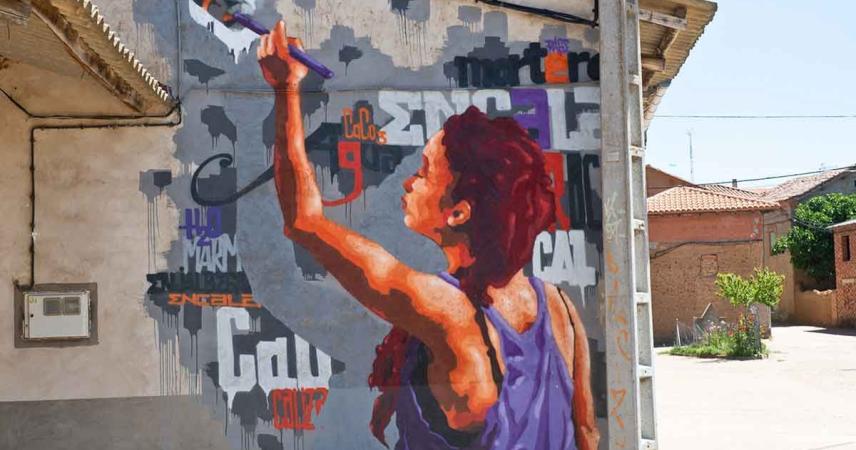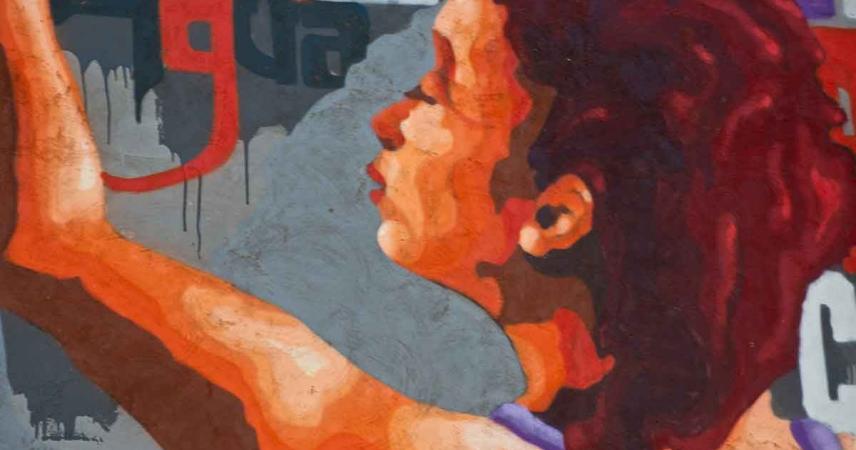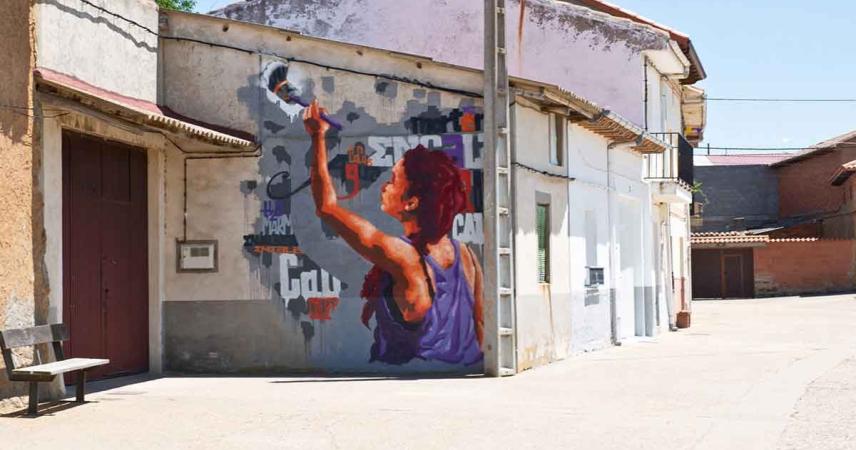Description of the work:
He has used a very unique theme that our ancestors and grandparents already developed in their time: the whitewashing or jabelgo of walls with quicklime, which they carried out annually and which was usually an activity carried out by women. The letters in the background of the mural correspond to a small alphabet soup with words directly related to the whitewashing process, such as rock, water, calcium carbonate (CaCO3), limestone, mortar, marble, etc.
Author: Javier Román García alias Rage.
Technique: Aerosols, plastic paint of different colors applied with rollers and brushes, and an acrylic varnish with UV filter.
Year: 2019
Javier Román García, alias Rage .
His stage name, tag, or signature is Rage. He's been painting graffiti since 1999, the year he created one of his first pieces, although he'd already started signing on the streets with markers and crayons a year earlier. During that early period, he experimented with and alternated between various artist names, such as Ryu, Hyra, Gear, and Rage. He experimented with different letters, designing and drawing sketches, and eventually moved on to the wall to paint them.
Among the influences he has had since he began, he has always had people from the graffiti world who were older than him close by, who alternated different styles, forms and techniques, acting in different cities through murals, bombing throw ups, panels, etc. It is to these people that he owes many stories and experiences lived together, as well as part of his evolution as a graffiti writer.
At this point, he began to create mural and decorative commissions for public and private companies and administrations, without neglecting the purest graffiti, "wild style" lettering, in all its forms. He goes out to paint whenever he has free time and sometimes extends the process of the piece over several days, a factor that makes him enjoy this hobby and way of life even more.
At the same time, he works as a workshop teacher in artistic cabinetmaking at the Palencia School of Arts, and he attempts to merge graffiti lettering with stone and wood sculpture, developing techniques such as 3D lettering and pastel designs. He has also been studying engraving and printing techniques for the past six years, which he merges with graffiti, including classic printmaking techniques such as drypoint, etching, and aquatint.


